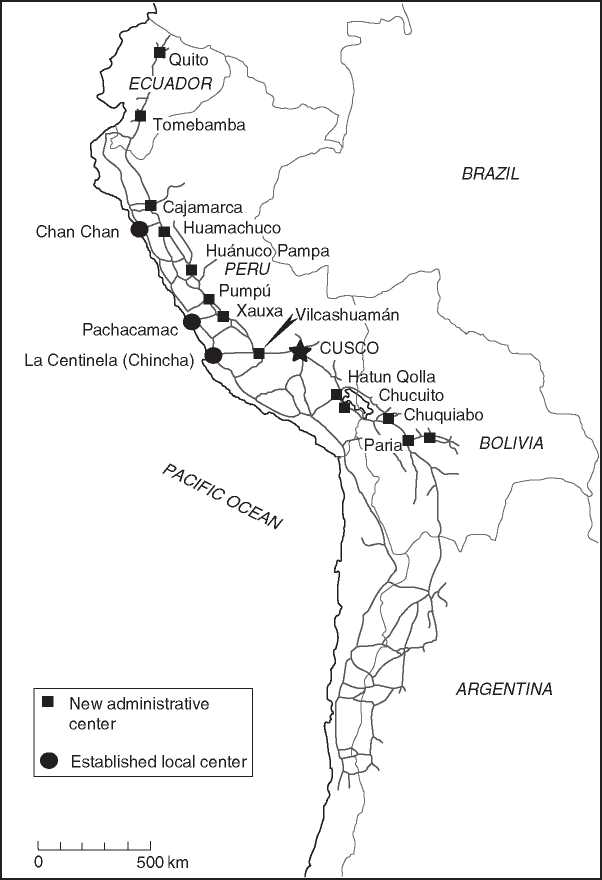Religion provided a critical link between Cusco and provincial regions, and religious organization varied substantially throughout the empire (Figure 3). To promote its intensive maize economy in directly administered provinces, the Inca state established its own sun cult in new cities along the royal road, constructing temples and akllawasi compounds. The reverence of local numina and sacred objects (wak’a) continued in these regions, as did veneration of ritual elements associated with extensive polycropping and herding. The state required that some local wak’a be housed in Cusco, and underwrote festive activities for others.
Pilgrimage centers at Pachacamac, Pariacaca, Raq-chi, and Titicaca provided a region-wide religious integration along parts of the coast in the Lake Titicaca area. In these areas the Incas co-opted creation myths and took steps to control pilgrimage by constructing religious facilities at established centers. Female ritual specialists (mamakuna) were established at pilgrimage centers and at some highland oracles, although local priests appear to have retained their positions. The transformation of the Copaca-bana Peninsula and nearby islands in Lake Titicaca signals a more direct control over highland pilgrimage than was achieved along the coast.
The southern half of the Inca empire lacks documentary references to sun temples and akllawasi. In this region the Incas appear to have made direct sacrificial appeals to important mountains (apu) by leaving human sacrifices on their peaks. Such sacrifices may have been conducted as part of the qhapaqhucha ritual, although it is difficult to correlate the documentary record with the archaeological evidence. In general, the establishment of the sun cult is strongly

Figure 2 The Inca road system, with some new administrative cities and existing local centers shown.
Correlated with regions where the documentary record also describes the establishment of provincial infrastructure and decimal administration. Areas under more indirect administrative control also saw a less marked presence of the imperial cult.




 World History
World History









